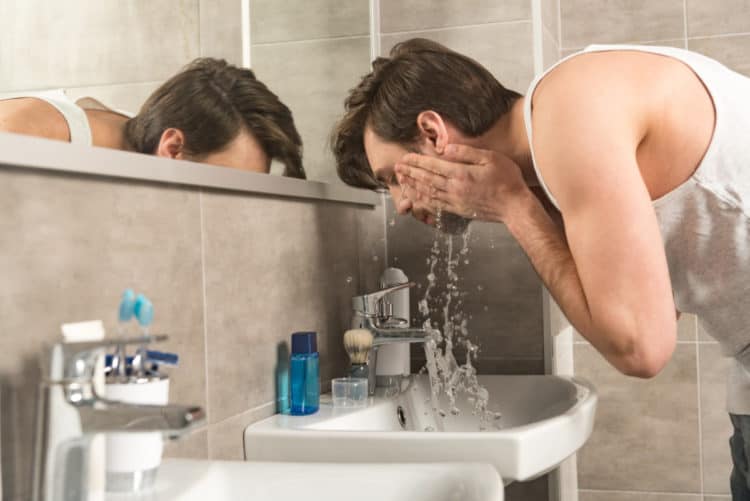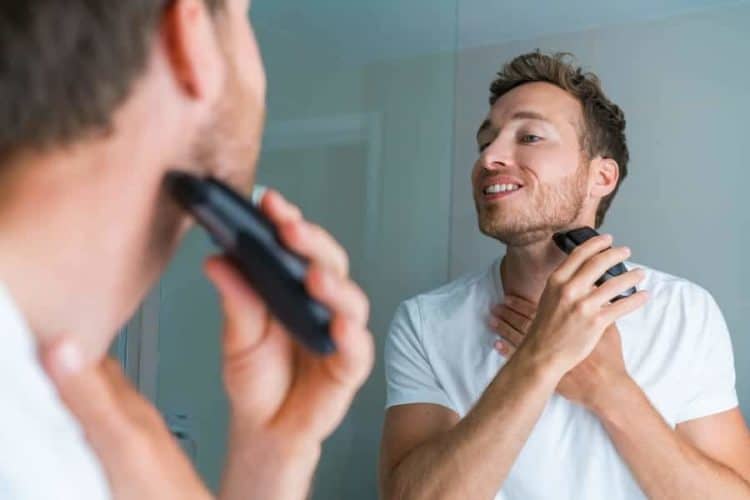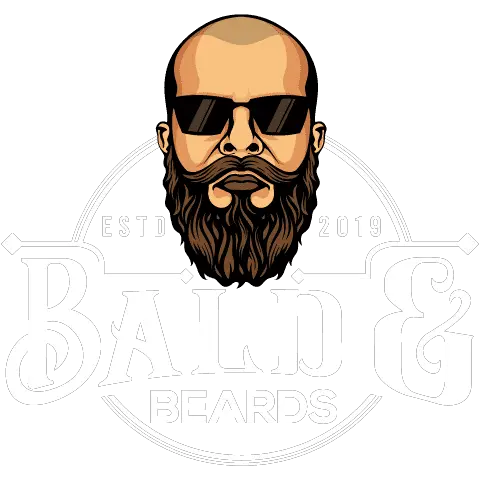Are you scratching your itchy beard more than usual? Itchy skin may be unavoidable if you have facial hair, but there’s quick relief with the right beard care.
A few at-home-care tips to help your itchy beard include shaving less often, growing your beard out and switching from a blade to an electric razor.
The truth is, most guys itch their beards, especially if you have less than two weeks of hair growth. If you’ve been struggling, we have some itchy beard relief tips. Keep reading to find out more.
Why Does my Beard Itch?
Beard hair follicles are thicker than your scalp hair. Irritation happens when the coarse facial hair bursts through the outer layer of skin (epidermis) causing the itchy feeling. To be itch free, exercise good beard hygiene and moisturize daily.
Itching is Common
First, beard itch is one of the most common problems for men. As you grow your beard longer, you may notice that your follicles tingle more, causing you to scratch as the strands grow longer. So, some guys can’t deal with the itch and start shaving off their beard at the first scratch.

However, if you can deal with the discomfort for a couple of weeks, it typically goes away on its own. While it’s not indicative of a serious issue, there could be an underlying skin problem if you notice red bumps and scabs forming. Sometimes, the condition may get better through medication.
Causes
New Beard
You just started growing a beard. Your follicles are used to regular shaving. This means you experience some tingling as new hairs come in and grow denser. Also, the hair’s sharp edges can scratch.
Growing Out
Longer hairs tickle the skin and push up against other follicles.
Dryness
The dry flaky skin underneath your beard may cause you to scratch more, causing irritation and redness.
Ingrown Hairs
Ingrown hairs can develop if you shave or cut hair, and it grows the wrong way back into the follicle. These can cause inflammation and acne-like red bumps that need to be removed. Read more about beard acne.
More about Dry Skin
Basically, your beard may always have a little itch, but if it becomes excessive, you may have a deeper issue. The dry skin under your beard is typically the culprit, and it may appear more like beard dandruff.
Your Dry skin may also come from new skincare products, changes in the weather, and water that’s too hot for your skin. There’s also a condition known as ichthyosis that causes the skin to become more scaly and thick. The condition is genetic.
More Severe Warning Signs
Psoriasis and eczema are two other primary causes of dry skin and red irritation. These illnesses cause severe itch from flaking skin and irritation. Seborrheic eczema causes larger flakes and typically looks like yellow, greasy scales on the skin. This may cause patches of irritated skin. You may need a medical ointment to treat this problem.
Folliculitis is another problem that some men suffer when growing out a beard. This refers to irritation at the follicle level. Bacteria, fungi, parasites, and ingrown hairs may inflame a follicle which causes it to grow itchy and irritated. You may even notice larger blisters.
Razor Bumps
Dermatologists may run tests if you’re still experiencing itch from another ingrown hair problem called pseudofolliculitis barbae (razor bumps). This is a condition where the hair goes through the follicle and curves backward to grow inside of the skin.
See our New Guide to Help Alleviate and Prevent Razor Bumps
This leads to more inflammation and red bumps. Pus may fill up the follicle and create a blister that resembles acne. However, this version isn’t caused by infection like folliculitis.
Others may suffer from tinea barbae, which is a fungus. This causes skin to change in color, becoming irritated and red. Most men who get this infection experience crusty bumps on their cheeks, chin, and mouth.
If you have ingrown hair problems or razor burn, you may want to try a calming balm.
How to Get Quick Relief
Growing a full beard doesn’t seem that difficult until you start to experience a new routine. Without shaving, itchy problems start as soon as new hair grows in, and for the first 14 days, it could be difficult to stop. In addition, you also have to clean your beard with the right products to avoid dry skin.
Here are a few beard care tips:
1. Keep Your Beard clean
Your beard can collect dead skin cells, grime, oil, and crumbs. So regularly wash your beard with a natural shampoo or beard wash in warm water. There are a ton of different products out there, especially made to cleanse the skin underneath your beard.

You should also exfoliate your face once a week to slough off dead skin cells and keep your skin supple. The skin under your beard may become irritated when itched to the point that you need to calm it with tea tree oil.
2. Help Beard Moisture
After cleaning your beard, get your hair soft and rejuvenated. Specialized beard conditioners help with moisturizing your skin and providing essential nutrients. You can improve your hair’s texture just by using a conditioner.

3. Brush and Comb
You can avoid hair rubbing up against your skin by brushing it in the right direction and taming knots. With a daily combing and brushing, you keep your beard shiny and healthy.
See our guides on the Best Beard Combs and Beard Brushes.
4. Apply a Beard Oil
Grooming a beard becomes a fun hobby when you have all the tools and products. Beard oil is one essential for every beard kit because it adds softness and shine at the same time.
5. Trim your beard
If you’re noticing a lot of irritation after using a trimmer or razor, then maybe you should change your beard trimming habits. Try clipping away hair instead of roughly pulling on your skin with a razor or trimmer. It could be causing more irritation if you have sensitive skin.

Medical Treatments
If the cause of your beard itching is something else entirely, then seek the advice of your doctor. A dermatologist can help with any red rashes, continuous irritation, and wounds that may not be healing. There could also be underlying issues that make your skin more susceptible to razor burn as well.
There are ointments, creams, and other skin products that can help your skin.
- Ointments or creams containing active ingredients like lactic acid and urea. These are best for chronic dry skin problems.
- Mupirocin helps with bacterial infections.
- Corticosteroid cream is a steroid and works best with no infection but still itches.
- Do you have a fungal infection? Your doctor may prescribe an antifungal cream like Lotrimin to treat the itch.
- Ketoconazole or Nozoral helps treat seborrheic eczema or other skin fungal infections.
While some causes are minor, growing facial hair when you have a fungal infection or other illness could lead to more damage to your skin. If you notice that you have scabs or blistering, it’s best to seek a consultation with your doctor.
Wrapping Up: Getting Rid of Beard Itch
No one likes beard itch, and if yours won’t stop itching, then you probably want to get relief right away. A damp, cold towel may help with immediate relief. You can follow that up with a cortisone cream if there are any itchy bumps. However, you should be able to cut down on most problems by using a natural shampoo and conditioning with a beard balm afterwards.
In the case of severe itching that leads to carbuncle boils, you may need to have a procedure that cuts and drains the boils. These are skin abscesses typically caused by ingrown hairs or a cluster of infected follicles.
If you have underlying problems such as an infection, then you may have to treat the hair follicle first. With vitamin E moisturizers, you can help heal agitated skin and reduce further scratching. Your doctor may run blood tests if the problem is persistent and doesn’t go away with any medicated creams.


